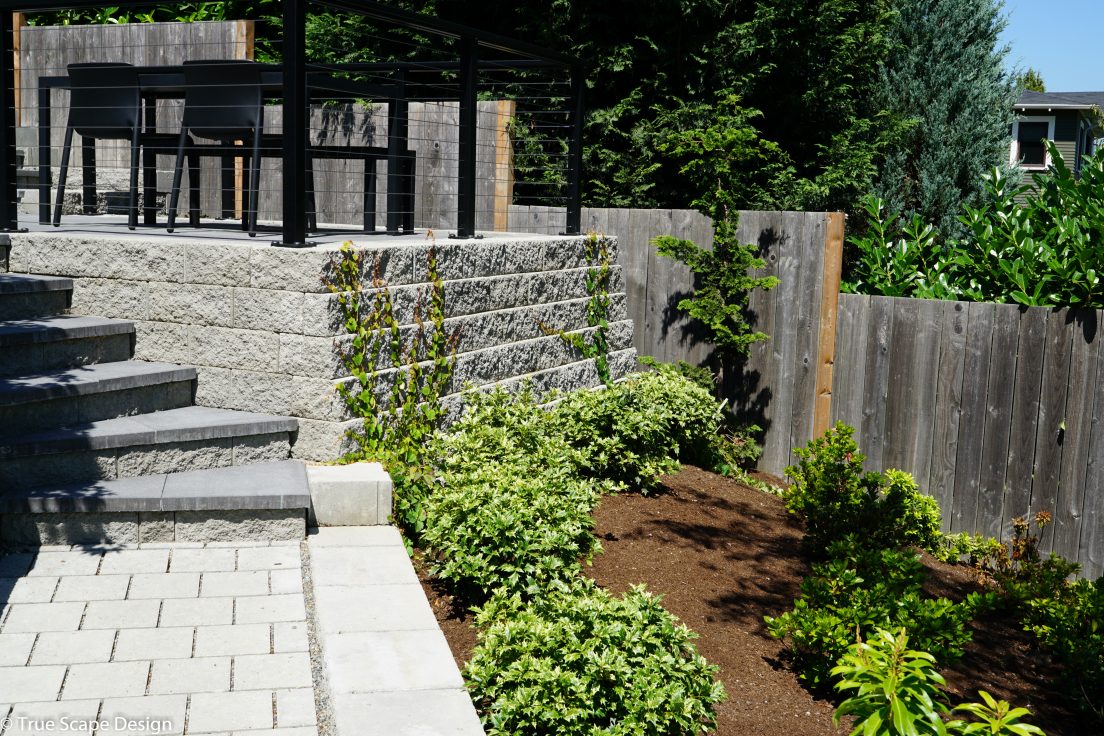Functions
Retaining walls are the base tool for manipulating elevations and directing or dictating the grading on a given site. These walls need not be merely functional in our spaces, but can also have aesthetic qualities of their own. Walls combine with other features like bench seats or trellises to enhance a design. That said, the core component of a retaining wall is still its function. Walls retain grades on slopes, separate space, or add a vertical focal point in the landscape, as with an address placard wall. Drainage is also an important component of retaining walls. Depending on the height and application, drain pipe or weep holes behind walls can provide a needed free-draining profile.
Inside an environmentally critical area (ECA), such as a steep slope hazard area, a Seattle homeowner may need a permitted variance to build a retaining wall of any kind. At True Scape Design, we have experience navigating that process. Please read more about ECAs here.
Materials
A variety of materials and compositions are available for constructing retaining walls. These include powder coated or CorTen steel, timber, concrete block, ledgestone, and natural rock. A combination of several different materials can form walls with deeper aesthetic appearances. Coping or cap units can add depth and interest to block walls, concrete walls, or timber walls. These features also work to draw the eye away from a blank wall face.
Features
The looks of a plain poured concrete wall can be improved with fascia materials fashioned from composite wood, specialty metal sheeting, or architectural vine panels. Individual vines can grow up or cascade down the wall. Upright and broadleaf evergreen shrubs can form the foundation plantings at the wall’s base. Individual trough planters can even decorate wall facades. Designs for walls can include architectural vine panels, cable trellis setups, decorative rock, and lighting. Each of these make walls pop and take on their own individual character. With a variety of options and compositions available, retaining walls are not just functional placeholders and can really become design features with characteristics of their own.
